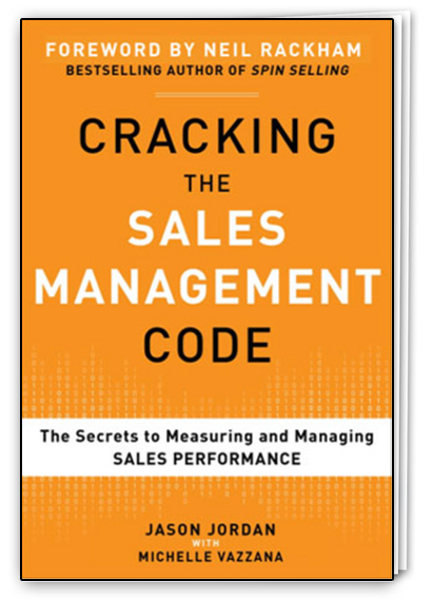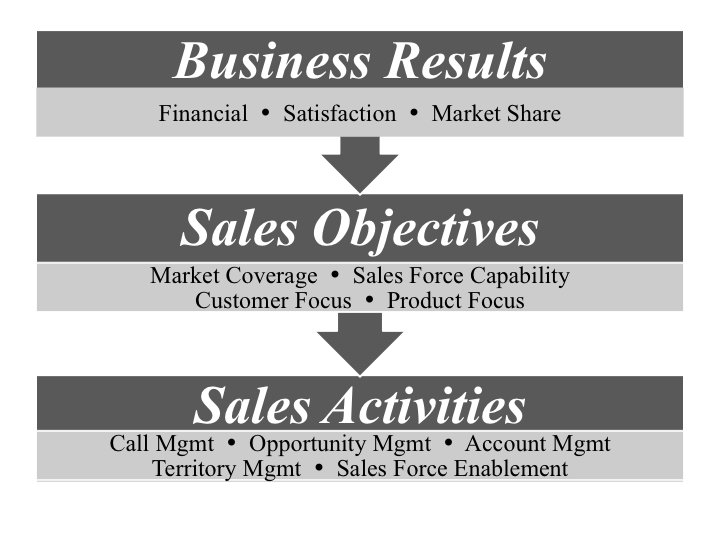INSIDER: Cracking the Sales Management Code
Dennis Thé, MBA
Today's sales force is inundated with metrics. The increasing prominence of information management systems has provided managers with the tools to track and evaluate performance data from anywhere and at any time. Metrics often fill the desks and line the walls of company "war rooms" and are used to assess all areas of corporate health. Despite which metrics a company uses, all metrics eventually relate back to the alpha metric (i.e., the main measure by which performance is measured) - revenue.

Jason Jordan and Michelle Vazzana's Cracking the Sales Management Code alludes to a lack of focus in most organizations' use of performance metrics. Many organizations invest in capital-intensive CRM systems that can generate detailed reports on the activities and productivity of an organization's sales force, but most do not utilize these reports effectively. Today, more than ever, senior leadership, sales managers, and salespeople are subject to an overflow of data and metrics. However, the old adage, you get what you measure, still rings true.
Greater visibility does not equal greater control. Organizations must not only have the capability to accurately measure performance, but they also must be able to understand how these metrics are managed to drive revenue. Jordan and Vazzana claim that sales professionals often lack the discipline to focus on the metrics that actually matter. Cracking the Sales Management Code empowers sales professionals to understand how metrics can be better managed through a reverse engineering process, dividing each metric into three important categories: Business Results, Business Objectives, and Business Activities.
THINK POINT #1: The End Goal - Business Results
Reverse engineering can be a counterintuitive process. In this context, reverse engineering emphasizes focus on the relationship between metrics. This means starting with a company's end goal in mind and funneling backwards towards the specific activities to drive desired results. For most companies, the authors argue that Business Results metrics can be divided into three categories: financial, satisfaction, and market share.

Financial metrics include a company's pre-determined, objective financial parameters, and may include metrics such as total revenue, gross profit, pipeline growth, revenue per sales representative, and/or revenue per region. Satisfaction metrics relate to how healthy a company appears from the outside, and can include customer and/or employee opinions. These metrics can be highly subjective and are often derived from personal experiences. Examples include customer/employee satisfaction, number of customer referrals, or employee intent-to-stay reports. Market share metrics measure how a company performs in relation to competitors, and can include percentage of overall market share, market share by region, or market share by department.
The financial, satisfaction, and market share categories are ultimately the most important metrics that a company keeps track of. As these metrics help measure success, they provide a clear snapshot of the overall health of the company. The biggest mistake that most companies make, though, is in attempting to directly manage these Business Results. Unfortunately, end results cannot be directly managed.
Consider a real estate professional that has a goal of generating $1 million in total real estate sales each quarter and is falling behind on his quota. The agent's strategy, knowing that he needs to make-up for an insufficient total dollar amount of sales, may include a scattered approach of spending more money on marketing activities or time cold calling to attract new customers. This mismatched strategy is an inefficient effort to drive revenue. Managing activities towards an end goal (generating $1 million in total sales), is not a direct process. Rather, the emphasis must be placed on setting clear Sales Objectives and Sales Activities to yield desired Business Results.
Question #1: What end goals (Business Results) are you trying to achieve? Are you thinking through a results-based lens or an activity-based lens?
THINK POINT #2: Setting Sales Objectives
After establishing Business Results, companies must then focus on setting and monitoring the objectives that will lead to a desired end goal. The authors argue that Sales Objective metrics can be categorized into four key categories: market coverage, sales force capability, customer focus, and product focus.
Market coverage objectives look at the metrics that determine whether a sales force has enough resources to pursue all opportunities in the market. Examples include number of total selling hours, percentage of customers called, and cost per sale. Sales force capability metrics refer to the degree to which a sales force is effectively maximizing resources during customer interactions. Capability metrics include win-loss ratio, length of sales cycle, and percentage of deals advancing per stage. Customer focus metrics assess whether a company is focusing on the right customers, and includes metrics such as number of new accounts and customer retention percentage. The last category of metrics, product focus, looks specifically at how a company manages its product mix. These four Sales Objectives metrics allow the company to take next steps in driving Business Results. Clearly-defined objectives and measured Sales Objective metrics empower a company to funnel resources into activities that can ultimately drive Business Results.
For the real estate agent looking to achieve $1 million in total sales, understanding and monitoring the Sales Objective metrics is necessary to achieve his desired end result. Had the agent been monitoring objective-based metrics such as his client retention rate (customer focus metrics) or perhaps a local trend that signaled stronger demand for high-end homes (product focus metrics), then he could have more effectively begun to manage his sales process to maximize his total sales to meet his quota.
Question #2: How are you defining your team/individual Sales Objectives to drive your desired Business Results? Where is there opportunity to refine your goals using these objective-based metrics?
THINK POINT #3: The Main Driver - Sales Activities
The final category of sales management metrics, Sales Activities, represents the areas where the most control over sales performance can be exerted. While many managers begin strategizing with activities, Jordan and Vazzana contend that through reverse engineering, activity should be the last area to approach.
Sales Activity metrics provide leadership with accurate success indicators and the tools to proactively manage a sales force. All Sales Activities fall into one of five following categories: call management, opportunity management, account management, territory management, and sales force enablement.
Call management metrics help evaluate the planning and conducting of customer interaction. These metrics can include average talk time and/or percentage of sales representatives engaging in call planning. Opportunity management metrics help sales teams navigate complex sales process effectively. Metrics include adherence to planning process percentage and/or the number of opportunity plans per sales representative.
Account management metrics maximize the long-term value of each customer, and can include the number of interactions per account and/or the percentage of completed business plans. Territory management metrics help allocate a team's selling efforts efficiently across regions. Metrics include the number of customers per sales representative and/or the activity volume per sales representative. Sales force enablement metrics improve a sales force's ability to sell effectively. These metrics can include training hours per full-time employee, frequency of coaching, and/or reporting tool usage percentage.
Sales Activity metrics can easily be monitored by a sales manager, and goals for each activity can be adapted to reflect changes in the market place and to improve overall sales performance. If an agent's goal is to meet a $1 million sales quota by the end of the quarter, and the agent had been monitoring his Sales Objective metrics (e.g., a low customer retention rate and shift in demand for higher priced homes), the agent would be able to further focus selling efforts on the Sales Activities that drive those Sales Objectives. For example, the agent would be able to identify specific areas in the sales cycle where customer retention is low (opportunity management) and re-evaluate processes at that point of the sales cycle. He could also focus his selling efforts specifically on areas and customers who would pursue higher-priced homes (territory management).
Question #3: How are you monitoring your activities to drive your specific objectives?
Conclusion
In order to sustain growth and increase sales force capacity, real estate professionals must learn to leverage the power of metrics through Jordan and Vazzana's reverse engineering model. Focusing on the specific metrics related to Business Results, Sales Objectives, and Sales Activities (and in that order) can help drive stronger results.
Most importantly, though, managers must take time to tie these components together to understand how these different metrics relate and affect one another. This process must not be taken lightly - Jordan and Vazzana's reverse engineering process and metric-based approach will be critical to a company's ability to proactively manage its sales force.
. . . . . . . . . . . . . . . . . . .
Recommended Reading
Jordan, Jason and Michelle Vazzana (2012), Cracking the Sales Management Code, New York, NY: McGraw-Hill.
. . . . . . . . . . . . . . . . . . .
About the Author
Dennis Thé, MBA
Baylor University
Dennis is from Boston, Massachusetts and received an MBA in Health Care Administration. Dennis' professional experience includes over 6 years of marketing and project management experience in IT, an administrative residency at Vanguard Health Systems, and over 7 years of community service. He is passionate about health care with a strong interest in health care policy, payer reform, and population health management models.